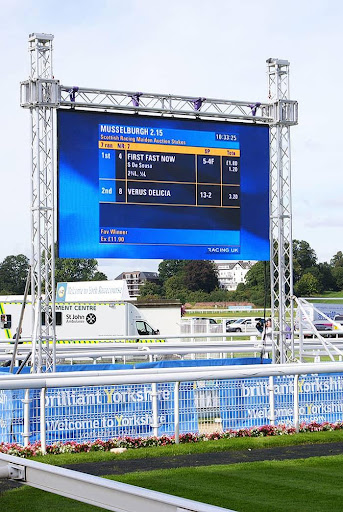
As important media devices, LED displays are deeply loved by the advertising industry. We all know that LED screens have a wide range of applications. However, there are many opinions on selecting LED displays in different places. Some new customers do not know how to choose a suitable LED display.
So, how to choose the model of LED display? What are the selection techniques? In this case, we have summarized the guide. You can learn from it to make it easy for you to choose the right LED display.
LED display specifications and sizes
There are many specifications and sizes of LED screens, such as P1.25, P1.53, P1.56, P1.86, P2.0, P2.5, P3 (indoor), P5 (outdoor), P8 (outdoor), P10 (outdoor) etc. Different sizes have different spacing and display effects, so we should choose the model based on the situation.
LED display brand
The quality of reputable brands’s LED display model like Unilumin 2.6mm LED display is more guaranteed, and they also have outstanding after-sales service.
LED display brightness
The brightness requirements of indoor LED displays and outdoor LED displays are different. For example,
indoors require a brightness greater than 800cd/m², semi-indoors require a brightness greater than 2000cd/m², and outdoors require a brightness greater than 4000cd/m² or 8000cd/m².
Generally speaking, outdoor brightness requirements for LED displays will be higher, so you should pay special attention to this detail when selecting.
LED display length-to-width ratio
The aspect ratio of the LED display will directly affect the viewing effect, so the aspect ratio of the LED display is also an important factor to consider in model selection. Generally, graphic and text LED screens do not have a fixed ratio, which is mainly determined based on the display content. The more common aspect ratios of LED video screens are generally 4:3, 16:9, etc.
LED display refresh rate
The higher the refresh rate of the LED display, the more stable and smooth the picture will be. Our common LED display refresh rates are generally higher than 1920 Hz or 3840 Hz, so when choosing an LED display, you should also pay attention to its refresh rate. A low refresh rate LED display will affect the viewing effect, and sometimes water ripples will appear.
LED display control method
The most common control methods for LED displays mainly include WIFI wireless control, RF wireless control, GPRS wireless control, 4G full network wireless control, 3G (WCDMA) wireless control, fully automatic control, timing control, etc. People can choose the corresponding control method according to their needs.
LED display color
LED screens can be divided into monochrome, dual-color, or full-color LED screens. Among them, monochrome LED displays are luminous screens with only one color, and the display effect is not very good; Dual-color LED screens are generally composed of 2 red + green LEDs. It is composed of diodes and can present subtitles, pictures, etc.; the full-color LED screen is rich in color and can present various pictures, videos, subtitles, etc. Currently, the most commonly used ones are Full-color LED displays.
LED display viewing distance
The pixel pitch of indoor LED displays is generally below 5mm, and the viewing distance is relatively close. Especially for small-pitch LED screens, the viewing distance can be as close as 1-2 meters.
LED display screen area
If the size of the screen does not exceed 20 square meters, it is recommended to use a bracket; if it exceeds 20 square meters, it is recommended to use a simple cabinet.
LED display installation environment
The working environment temperature range of LED display is -20℃≤t≤50℃, and the working environment humidity range is 10% to 90%RH; avoid use in adverse environments, such as high temperature, high humidity, high acid/alkali/salt, and other harsh environments.
LED display power consumption
The power consumption directly affects the service life of the LED display. High power consumption not only consumes electricity but also easily accelerates the aging of the LED tube. Over time, the display will turn yellow and darken, which will also have a negative impact on the visual effect.
The flatness of the LED display
The flatness of the surface determines the display quality of the LED display. The surface flatness of the LED display must be within 1mm to ensure that the displayed image is not distorted. If the flatness of the LED screen surface is low, local bulges or depressions will occur. situation, resulting in dead corners in the picture viewing angle, thus affecting the look and feel.
Conclusion:
Through the above tips, We hope it can help people select the right LED displays. But you still need to make a choice based on your own situation and needs.
If you are looking for the best cost-effective LED screen, there is no doubt that used LED video wall is an excellent option. As a reliable used LED video panel provider, IAMLEDWALL not only provides stock LED displays, but we can also offer high-quality LED video walls. Please feel free to contact us if you are interested in more information.
